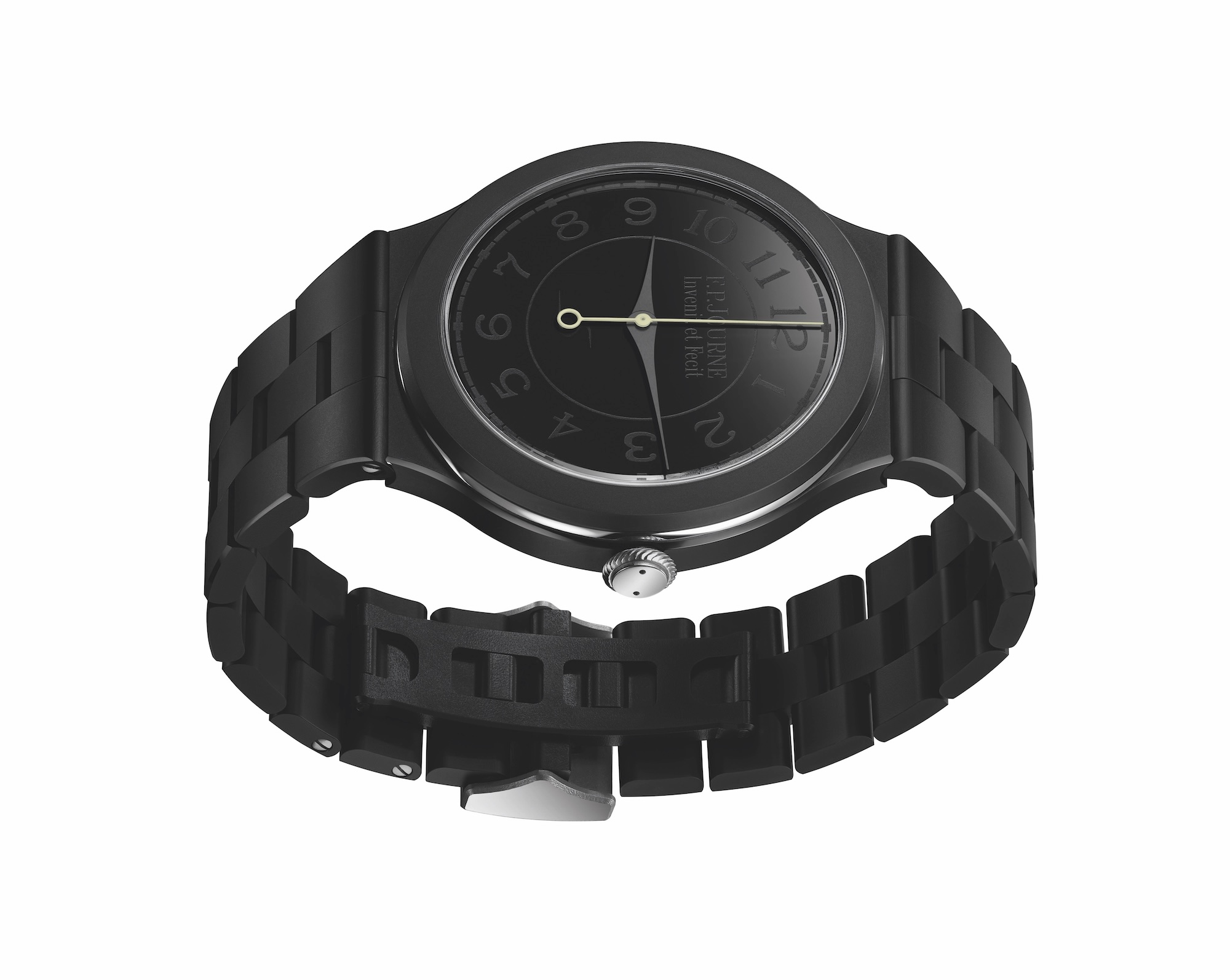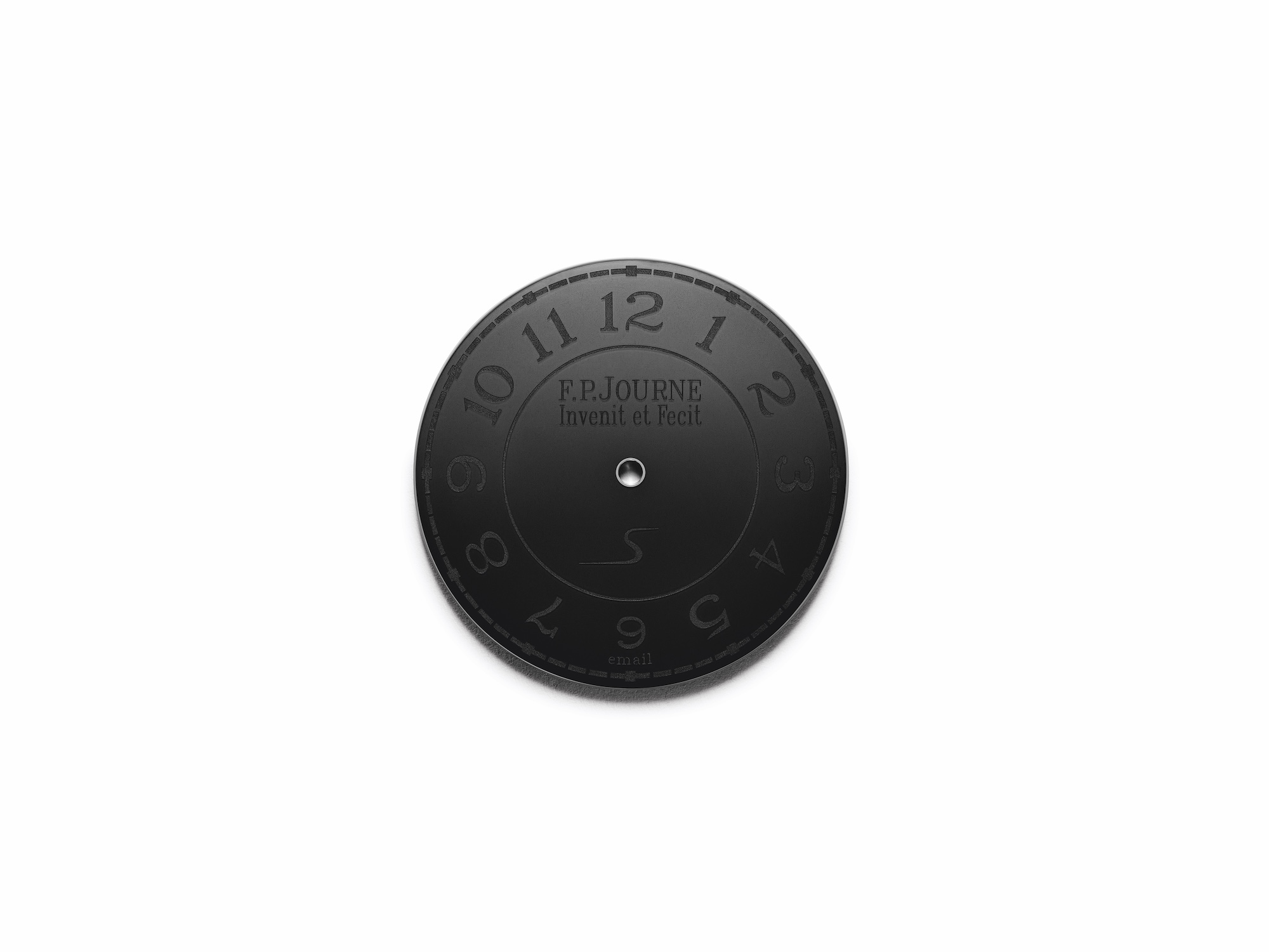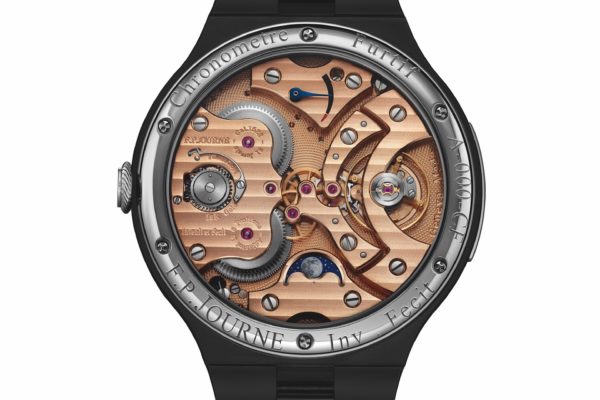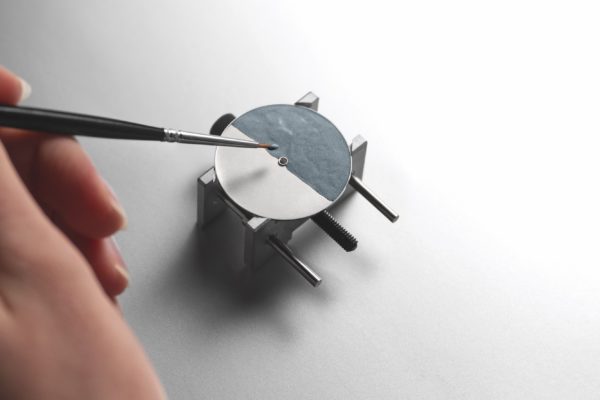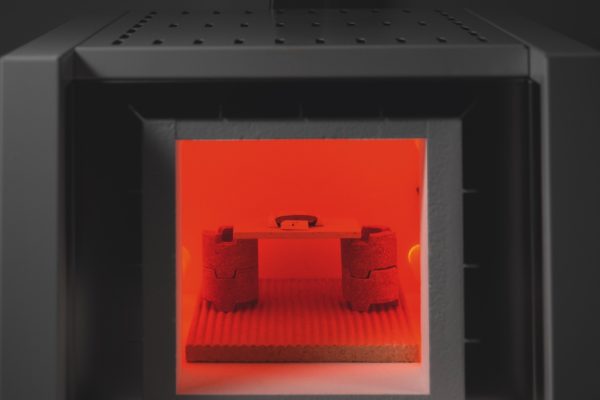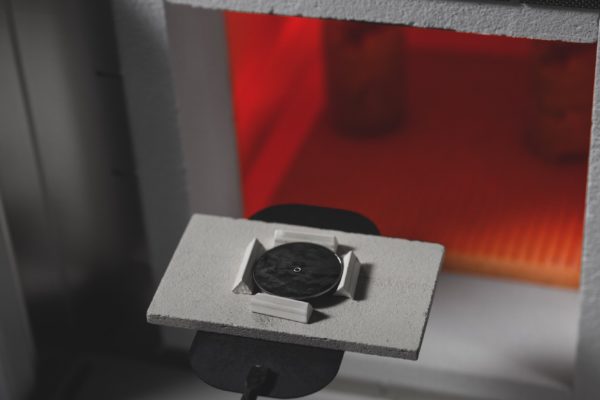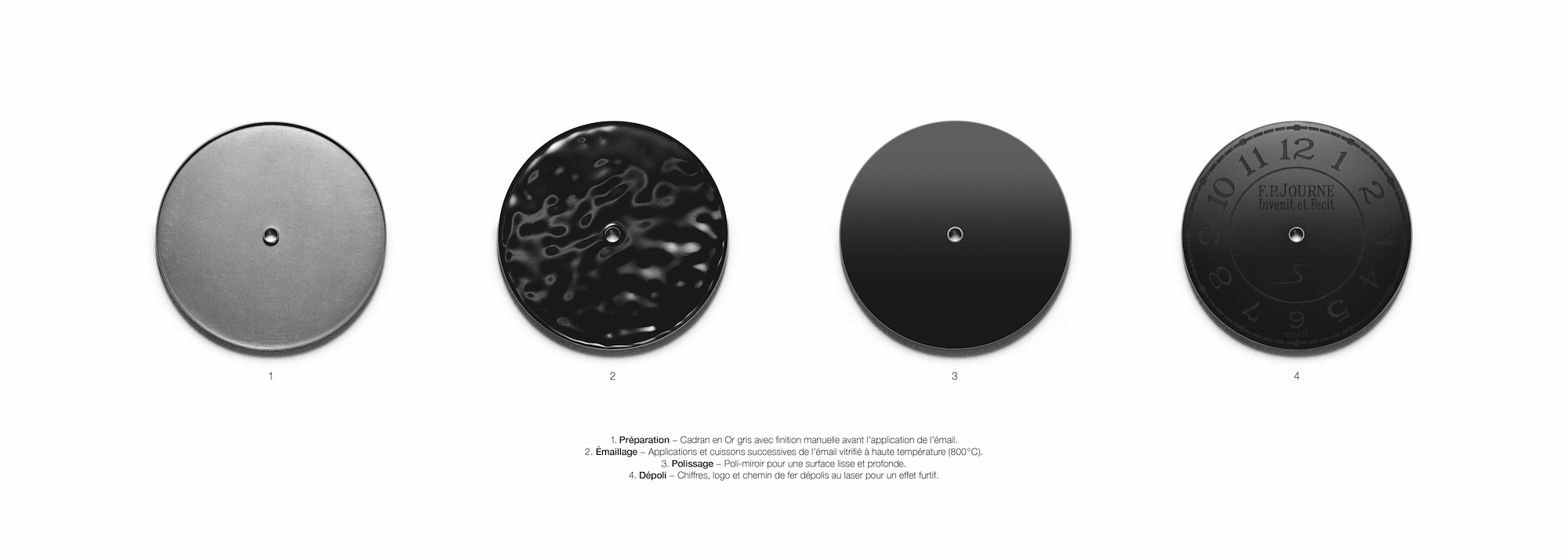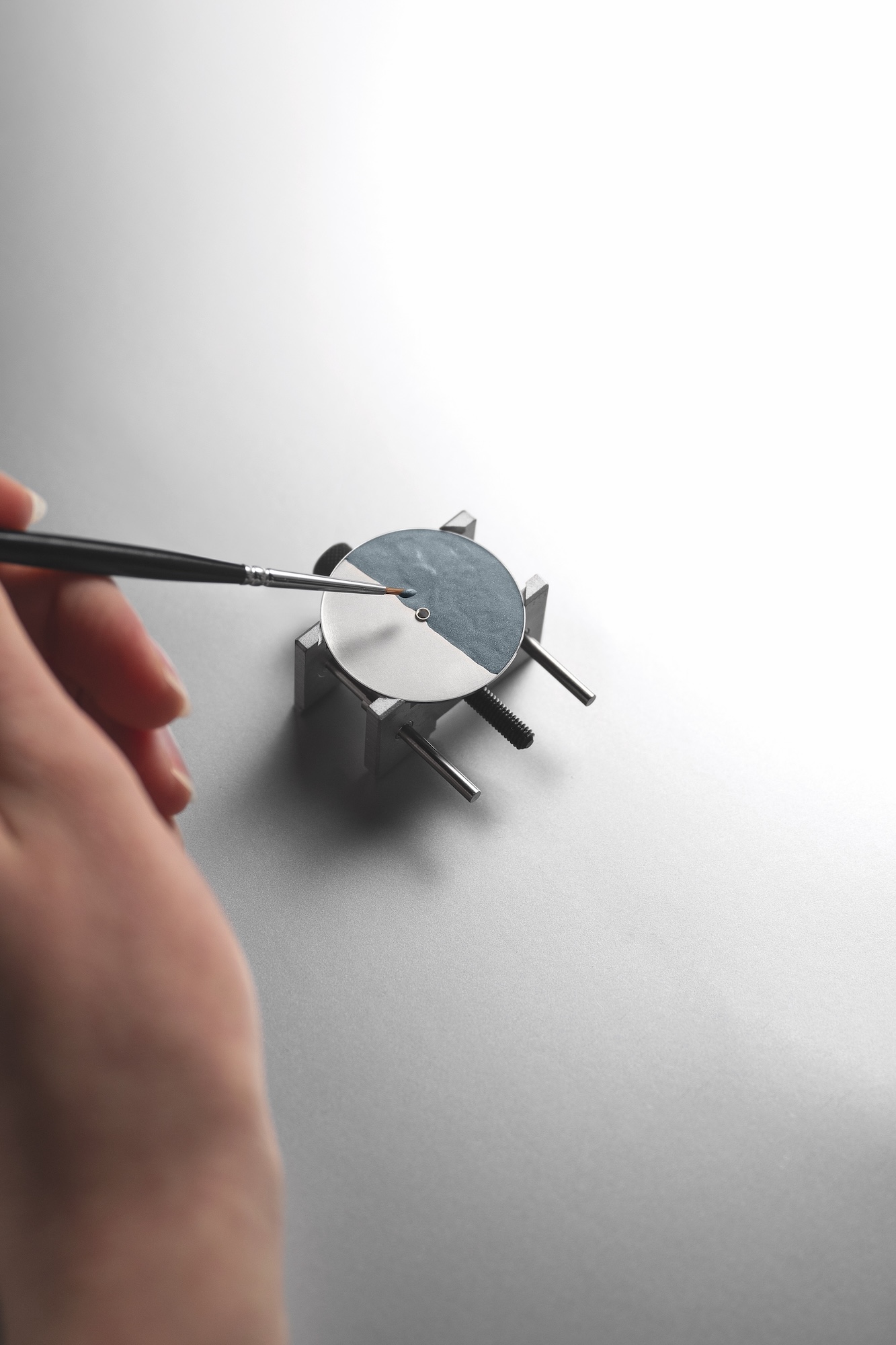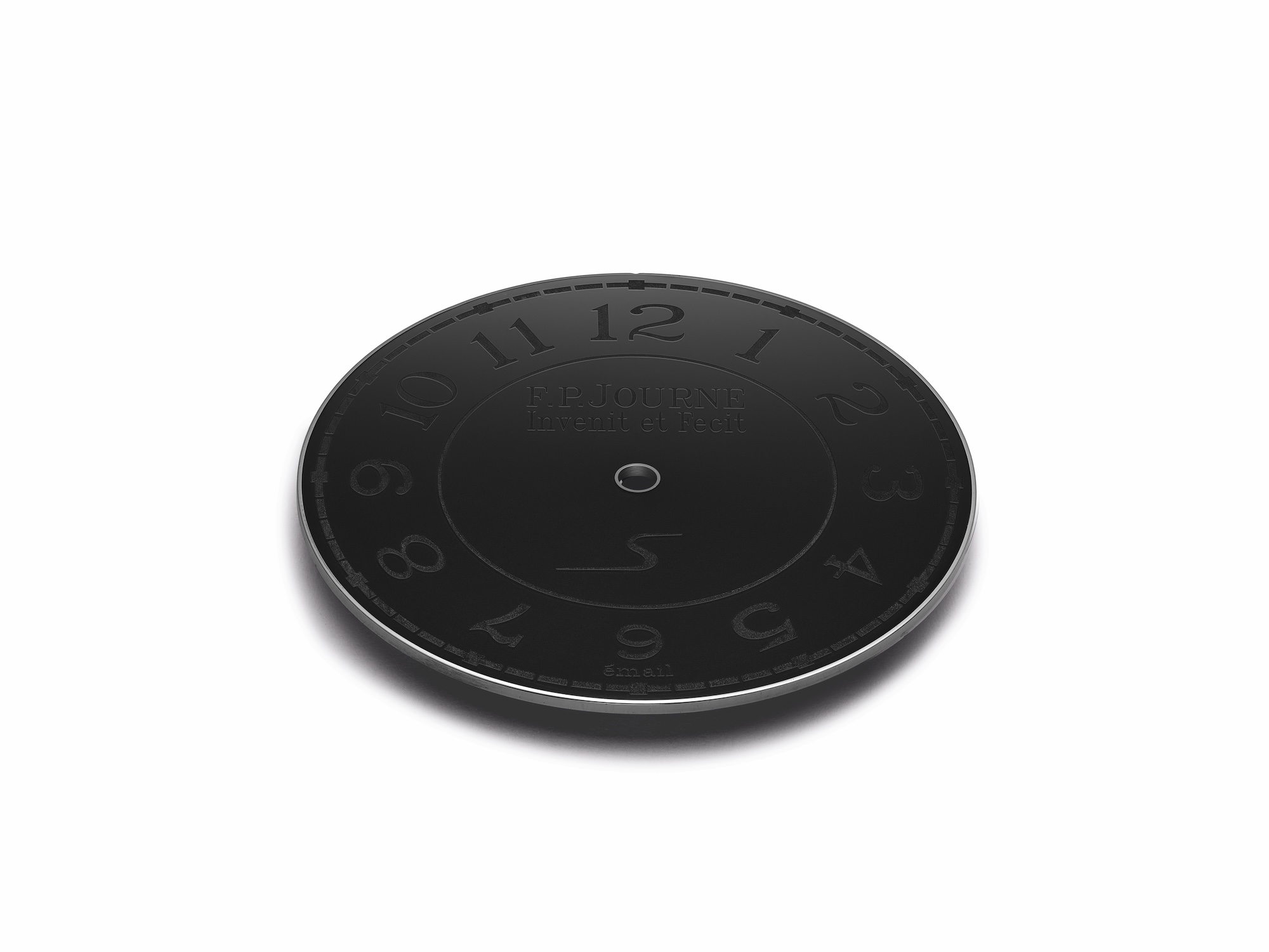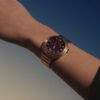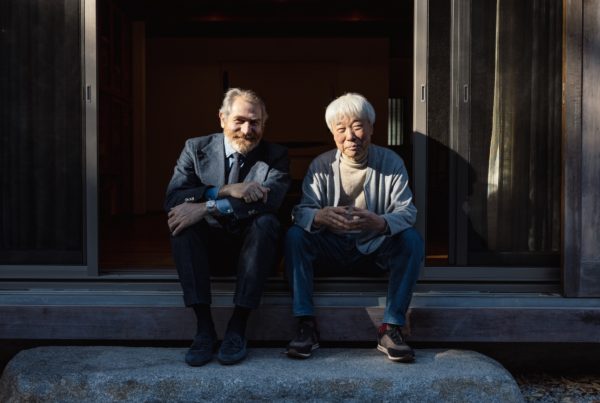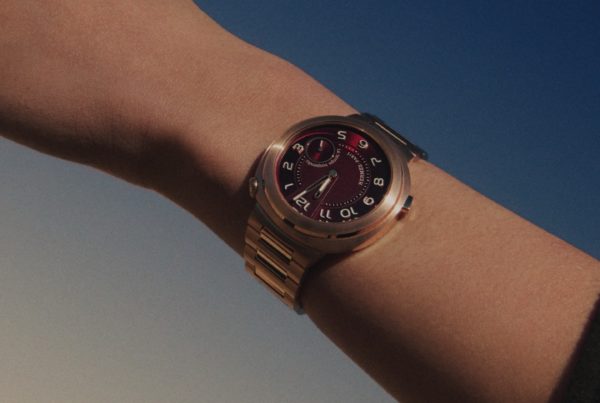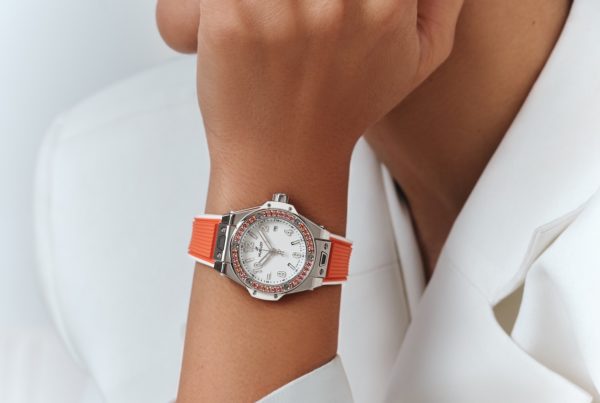The enamelled dial of the Chronomètre Furtif: born of a trial by fire
In the Métiers d’Art workshop of Les Cadraniers de Genève, a team of five experts hone their exceptional skills in the different disciplines used to decorate the dials of the company’s clients: engraving, setting, miniature painting and enamelling. It is the last skill that François-Paul Journe is employing for his latest model: the Chronomètre Furtif. With its anthracite grey mirror-polished enamel dial, and its case and bracelet in tungsten carbide, this model will quickly become a Holy Grail for connoisseurs of the master watchmaker.
The art of enamelling can be considered a kind of modern alchemy: the enameller does not turn lead into gold, but does succeed in transmuting a fine powder into a vitrified coloured material, penetrated by the light, after subjecting it to a trial by fire.
To find out more about this ancient art, and discover the secrets which lie behind the dial of the Chronomètre Furtif – a new piece hotly anticipated by fans of the F.P.Journe Manufacture – we simply had to visit to the Métiers d’Art workshops of Les Cadraniers de Genève. Set up in their new building in Meyrin since June 2023, the dial-makers share these premises with Les Boîtiers de Genève, the two areas of expertise integrated into F.P.Journe.
This workshop, dedicated to the artistic disciplines, opened in 2020 and is principally devoted to enamelling, although setting and engraving are also practised there under the direction of Dario Oliveira, who set it up. His relationship with François-Paul Journe dates back to the creation of the Tourbillon Vertical, which he created the enamelled dial colour for while he was still heading up his own company. The trust between the men then grew, and when he decided to shut down his activity, François-Paul Journe sought him out and gave him carte blanche to set up the Les Cadraniers de Genève workshop. This was five years ago.
In this art form, the material reacts with the heat, with unpredictable results, but we ensure we give ourselves the best possible chance by using a clean, uniform enamel for a perfect result.
Enamelling is an ancient art form which has been used by watchmakers to bring a sublime decorative touch to their timepieces since the 17th century. To create a surface which looks like opaque or translucent coloured glass, the enameller uses enamel, a transparent material which has been coloured with different metal oxides (cobalt gives a deep blue or green hue, manganese is purple, and selenium, yellow, for example). This material is then ground to a powder and mixed with water. The master craftsman then applies the enamel powder using minuscule brushes and fires the piece at a high temperature – at least 800 degrees (1472°F) – so it can vitrify; this temperature is why it is known as “Grand Feu” enamelling. To achieve the desired result, the enameller applies several layers which are fired in turn. Each firing can create irreversible damage, and negate all the hours and days of work put in thus far. But this risk is part of the beauty of this art.
An alchemical process
Behind the workbenches, a large library filled with vials of glass in every imaginable colour spans one wall of the workshop. This is the enamellers’ treasure trove. Obtaining the desired colour is a challenge: you need to know how to balance the different ingredients and invent techniques so that the texture is unlike any other.
Some enamels come in the form of crystals and others are already crushed to a powder, but all enamels are crushed again in the workshop to achieve the required result. “It is very time-consuming work” explains the head of the workshop. “Firstly, we clean all of the enamels that we purchase with demineralised water: the silt rises to the surface with the impurities. Then, we need to crush it again by hand in a mortar to obtain the kind of homogenous powder we like to work with. We prepare the enamel in small quantities, as needed, just before we use it, and this preparatory stage takes us one to two hours. The less homogenous the enamel, the more complicated its application and firing, and the more air bubbles will be created. In this art form, the material reacts with the heat, with unpredictable results, but we ensure we give ourselves the best possible chance by using a clean, uniform enamel for a perfect result.”
A Library of 800 Shades of Enamel
At Les Cadraniers de Genève, we work with a palette of around 800 colours, only 300 of which have the quality required for watch dials. These enamels come from manufactures such as Milton Bridge (Blythe, Shauer), Thomson, Cristallerie de Saint Paul, and from Japan. The vials have poetic names: Mazarine, Sapphire… But there is no way of knowing the name of the anthracite grey used for F.P.Journe’s Chronomètre Furtif. “We won’t be disclosing that”, replies Dario Oliveira with a smile.
“We have some really old enamels, which have magnificent colours and have become quite rare, but these days all the watch firms are insisting on the use of lead-free enamel. Despite the fact that, without lead, the enamels are of lesser quality, with less brilliance. For example, it has become increasingly difficult to find a white or a black which reacts well, does not form bubbles, or contain impurities, and gives a good surface finish. But we have to adapt. Working without lead is a good thing, but in terms of quality, we can see the difference”.
The complexity of the watch dial on the Tourbillon Vertical is not evident at first glance, however, the process is very specific. “It is champlevé Grand Feu enamel with an enamel decal which gives it a retro look. It is a complex process as we are adding an enamel decal to a dial which has already been enamelled. This means the piece has to be re-fired, with the risk of this creating defects that were not there previously or sparking unexpected reactions, which could mean that the piece has to be recreated from scratch. Furthermore, as this dial is a figure-of-eight, we had to find a solution for the deformation point at the juncture between the dial at 3 o’clock and the sub-dial at 6 o’clock. This work has to be done in-house if we want to be sure of the result”.
The five master craftsmen working here are devoted to creating dials for the F.P.Journe Maison, but not only for them: many major manufactures make use of their expertise. Each of them specialises in several disciplines, but most specifically enamelling. A fascinating yet demanding form of art. It takes at least five years of training to learn the basic techniques, and a lifetime to master all of its intricacies. For over 15 years, Dario Oliveira has been pointing his brushes, refining his sense of colour, and deepening his love for discovering materials. And it is a vocation that feeds his passion, despite the challenges, and surprises, it sometimes sends his way, both good and bad.
Mirror-polished enamel
Let’s get back to the purpose of this visit: discovering the dial of the Chronomètre Furtif. It is in this space, bathed in daylight, that the enamel dial of the Chronomètre Furtif Bleu Only Watch 2024 was designed, with its tantalum case and bracelet. When François-Paul Journe decided to make this timepiece part of the collections, he opted to ornament it with an anthracite dial to distinguish the series model from the prototype. When we know how demanding the master watchmaker was, we can see that the apparent simplicity of the model is actually the result of a long and complex process.
While the dial of the Chronomètre Furtif Bleu was, as its name suggests, blue, the new model features a dial in a shade of anthracite that is difficult to define. The colour is both deep yet radiant, polished and yet matt, if indeed we can attribute to it all these seemingly contradictory adjectives. It is only in observing this striking result that we can fully grasp the complexity of the work undertaken in this workshop. They had to solve an equation with several unknowns to fulfil the wishes of the master watchmaker who wanted a colour that was almost impossible to obtain. How did they successfully achieve this?
It is a dial that seems quite simple, but in reality, this was not at all the case: if we add together all the months of work that it took to reach the final result, it took us about a year to master the colour, and eighteen months in total, including the mirror polishing.
Eighteen months to create the Chronomètre Furtif dial!
“François-Paul had an idea: he asked us for ‘a colour a bit like that one’, and left it to us to decipher exactly what he wanted and find the solution. We performed several tests. He chose one of the results. However, we were not satisfied with the quality of the enamel. We had to look for other solutions of a high quality which were still close to his original choice: this was the start of period of endless testing. We couldn’t find anything satisfactory. It is a dial that seems quite simple, but in reality, this was not at all the case: if we add together all the months of work that it took to reach the final result, it took us about a year to master the colour, and eighteen months in total, including the mirror polishing.”
The first difficulty was the finish of the dial. “It is very specific. In general, when a dial comes out of the kiln, the enamel is vitrified. It appears smooth but with a slightly dimpled textured ‘orange peel’ effect. But François-Paul Journe wanted a Grand Feu enamel dial which was completely smooth, with a mirror-polished finish”. When we asked him how he managed to achieve this, he smiled and replied: “It’s a secret! It took us a lot of time to find the solution. It was hard work, because none of us is trained in polishing”. The fact that Les Cadraniers de Genève and Les Boîtiers de Genève, which employs a number of polishers, work under the same roof was key to finding the solution to the problem of polishing the enamel. “We all sat around the table to think about this problem, we started to perform tests, and together we found the right technique”. And what is the best way to polish enamel, a vitrified material containing bubbles and impurities? That question will remain unanswered…
We do everything by hand, from preparing the enamels to the enamelling itself, soldering the feet, polishing, and laser treatment. It is therefore impossible to create ten identical dials. Our aim is for them to be as similar as possible
Time is invisible to the eyes
The second difficulty? Finding the right colour and the right rendering. When you look at the dial, the thing that surprises most is its opacity. In fact, the unpolished numerals only appear when the watch is facing the person wearing it, thanks to the reflections of light; this is the special feature of the Chronomètre Furtif. “François-Paul had already been nurturing this idea. He just wasn’t sure if the numerals should be unpolished or if they should remain polished with the rest of the dial unpolished. We obtained a colour that we liked, but it was not dark enough. We then had the idea of adding texture to the base of the dial by trialling different surface treatments – spraying an opaline lacquer, sand-blasting, using pumice, for example – but each time, the enamel reacted poorly: bubbles would appear and the result was not aesthetically pleasing. Even though we cleaned the dial thoroughly, the result was not satisfactory. We then started thinking outside the box and tried working manually under a binocular magnifier, applying a subtle grained effect by hand which resembled sand-blasting. With this treatment, the dial darkened slightly in colour, and when we added the required layers of enamel, we had finally achieved the colour we wanted! It was like finally finding the chest in a treasure hunt!”.
The enamelled dials were then sent to Les Boîtiers de Genève to be polished. Once the result was agreed, the laser marking was carried out, allowing the unpolished finish of the numerals to be obtained. The dials, having passed all the inspections, all the verifications, are then numbered, photographed, inventoried and delivered.
“We do everything by hand, from preparing the enamels to the enamelling itself, soldering the feet, polishing, and laser treatment. It is therefore impossible to create ten identical dials. Our aim is for them to be as similar as possible. We have a reference piece that we use as a benchmark, and we have to decide what is acceptable or unacceptable based on this. We keep around 60% of production, which means that if we manufacture ten dials a month, all of which we have spent time on, we have to accept that four of these will not be used and will be smelted back down”.
Even though Les Cadraniers de Genève does not actually sign their work, their attributes and their expertise are recognised by professionals and respected by customers. Quality reigns supreme in everything they do, and it is this which acts as their secret signature.
A monochrome timepiece
With its tungsten carbide case and bracelet and anthracite grey Grand Feu enamel dial on white gold, the Chronomètre Furtif takes certain liberties with the iconography of F.P.Journe watches. The master watchmaker has a highly recognisable aesthetic signature, with colour codes that have been clearly defined right from his first timepieces: platinum, gold, steel and tantalum. With this new model, we get the feeling that what we are holding is not a watch, but a work of art. This feeling is only strengthened by the fact that a Chronomètre Furtif, by definition, only reveals the time to its wearer. The master watchmaker has created a watch that is completely monochrome. Is this new model starting a new chapter in the master watchmaker’s history: a period of artistic exploration?

